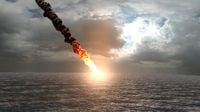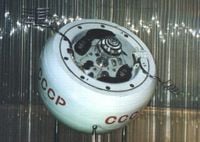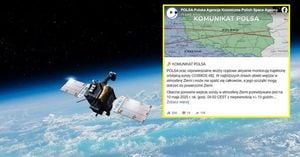A 53-Year-Old Soviet Spacecraft Set to Fall Back to Earth This Weekend
The defunct Kosmos 482 spacecraft, originally intended for a mission to Venus, is expected to reenter Earth's atmosphere between the evening of May 9 and the early morning of May 10, 2025, according to multiple space agencies.
The European Space Agency (ESA) predicts that the spacecraft will reenter at approximately 2:26 a.m. EDT on May 10, with an uncertainty margin of plus or minus 4.35 hours, placing the reentry window between 10 p.m. EDT on May 9 and 7 a.m. EDT on May 10. Meanwhile, the U.S. Space Force forecasts a slightly earlier reentry, around 1:52 a.m. EDT on May 10.
Kosmos 482 was launched on March 31, 1972, as part of the Soviet Union's ambitious Venera mission to explore Venus. Unfortunately, a malfunction with the Soyuz rocket prevented the spacecraft from achieving the necessary velocity to escape Earth's orbit. Instead, it has been stuck in a decaying orbit for over 53 years.
Experts are closely monitoring the descent of Kosmos 482, which weighs approximately 1,091 pounds (495 kilograms) and measures about 3 feet (1 meter) across. The spacecraft is expected to impact at speeds around 150 miles per hour (242 km/h) when it reaches the surface.
While the reentry of a large piece of space debris may sound alarming, the risk of injury to individuals on the ground is minimal. ESA officials have stated that the annual risk of an individual being injured by space debris is less than 1 in 100 billion, significantly lower than the likelihood of being struck by lightning.
As it descends, the spacecraft could land anywhere between 52 degrees north and 52 degrees south latitude, a vast area that includes significant portions of North America, Europe, Africa, and Australia. However, given that oceans cover approximately 71% of the Earth's surface, the likelihood of Kosmos 482 landing in water is high.
Marco Langbroek, a lecturer in space situational awareness at Delft Technical University, has been tracking Kosmos 482 and believes that the spacecraft, designed to withstand the extreme conditions of Venus, may survive reentry intact. He noted that while the craft was built to endure high temperatures and pressures, its long exposure to solar radiation may have compromised its integrity over the years.
Interestingly, Kosmos 482 is not the only remnant of the Soviet Venus program. During the height of the Cold War, the USSR launched 29 spacecraft towards Venus, with many successfully landing or orbiting the planet. However, Kosmos 482 became one of the few that failed to complete its mission, instead becoming a piece of space junk.
The Venera missions were significant for their time, with Venera 7 being the first spacecraft to successfully soft-land on Venus in 1970. Venera 8 followed in 1972, while Kosmos 482, launched shortly after, was meant to join its twin but remained trapped in Earth's orbit due to a malfunction.
After its launch, Kosmos 482 broke into four pieces, two of which decayed within 48 hours, while the lander continued its orbit. Over the decades, it has traveled as far as 5,600 miles (9,000 km) away from Earth, but the atmosphere is now dragging it back towards a predicted reentry.
As Kosmos 482 prepares to make its descent, observers are keenly interested in tracking its trajectory. Resources like Heavens-Above.com allow individuals to monitor the spacecraft's position and predict visibility during its reentry. Depending on the landing site, it may be visible as a bright meteor streaking across the sky.
Despite the excitement surrounding Kosmos 482's impending return, experts caution that the uncontrolled nature of its reentry makes precise predictions challenging. Solar activity and atmospheric conditions can significantly influence its descent, leading to uncertainties regarding its exact landing location.
In the context of growing concerns about space debris, Kosmos 482 serves as a reminder of the challenges posed by defunct satellites and spacecraft. As the number of objects in low Earth orbit continues to rise, space agencies are increasingly focused on developing strategies for debris removal and mitigation.
As the world watches for the outcome of Kosmos 482's reentry, one thing is certain: this aging spacecraft, a remnant of a bygone era, will soon conclude its long journey in Earth's orbit, marking the end of an unusual chapter in space exploration history.






